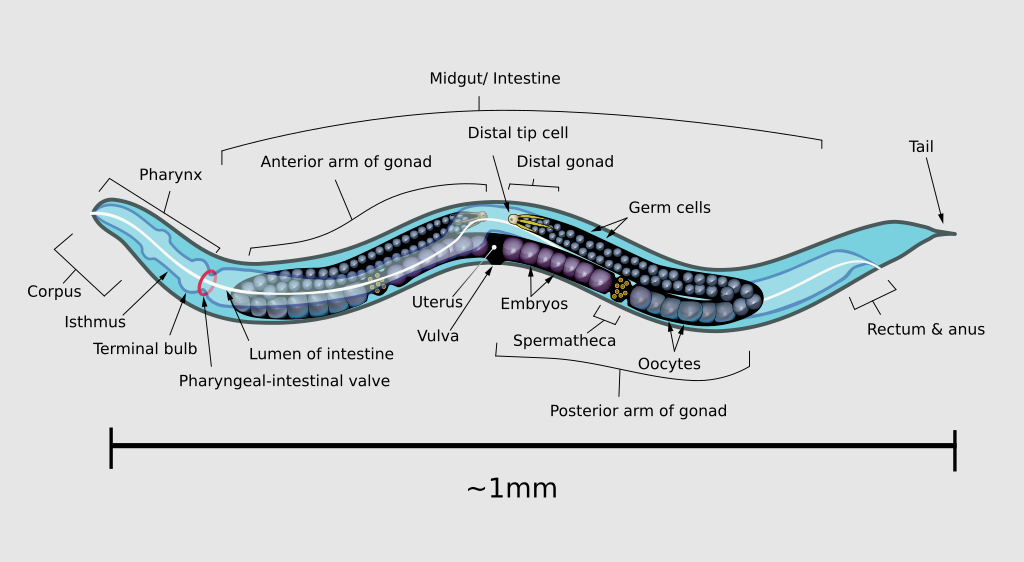Note4Students
From UPSC perspective, the following things are important :
Prelims level: C. Elegans Worm
Why in the News?
Researchers have discovered a mechanism in Caenorhabditis elegans (C. elegans) worms that explains why fat loss slows down during fasting.

Fasting and Fat Metabolism
|
About Caenorhabditis elegans (C. elegans):
| Details | |
| Overview | A small, free-living nematode (roundworm) used as a model organism in biological research. |
| Size | Approximately 1 millimeter in length. |
| Habitat | Found in soil environments worldwide. |
| Reproduction | Primarily self-fertilizing hermaphrodites; males make up a small percentage and can mate with hermaphrodites. |
| Genome | First multicellular organism to have its genome fully sequenced; about 20,000 genes. |
| Chromosomes | Six chromosomes (five autosomes, one sex chromosome). |
| Body Plan | Approximately 1,000 cells in an adult hermaphrodite; transparent body allows for easy microscopic observation. |
| Lifespan | Around 2 to 3 weeks under laboratory conditions. |
| Research Contributions | Instrumental in discoveries related to apoptosis, RNA interference, gene regulation, and human diseases. |
PYQ:[2013] Improper handling and storage of cereal grains and oilseeds result in the production of toxins known as aflatoxins which are not generally destroyed by normal cooking process. Aflatoxins are produced by: (a) Bacteria (b) Protozoa (c) Moulds (d) Viruses |
Get an IAS/IPS ranker as your 1: 1 personal mentor for UPSC 2024
